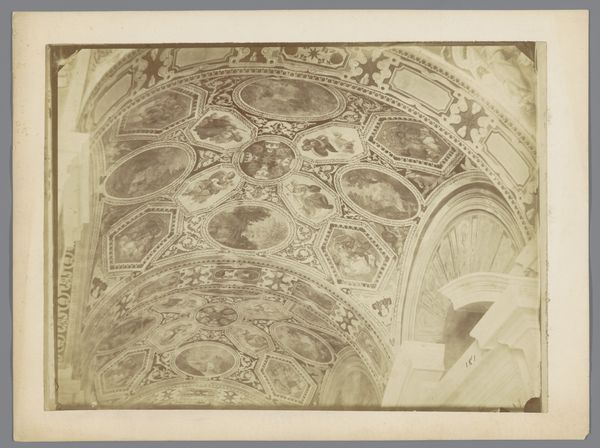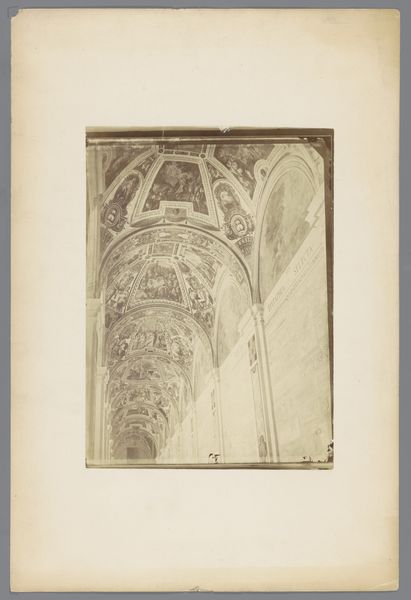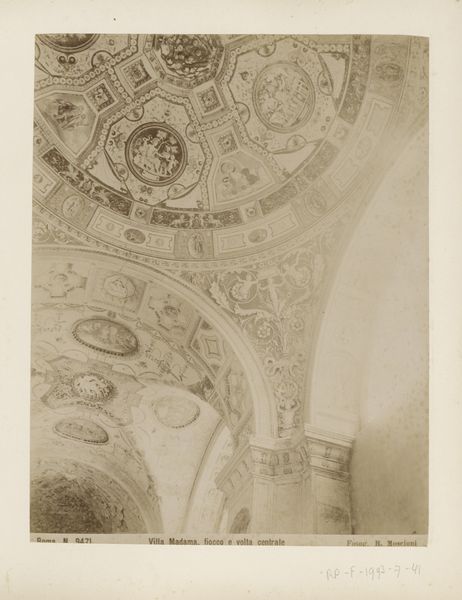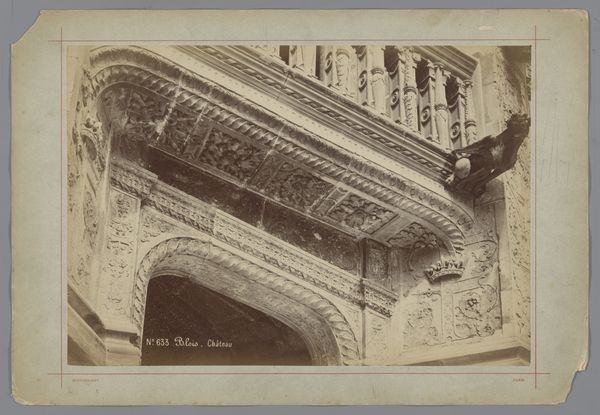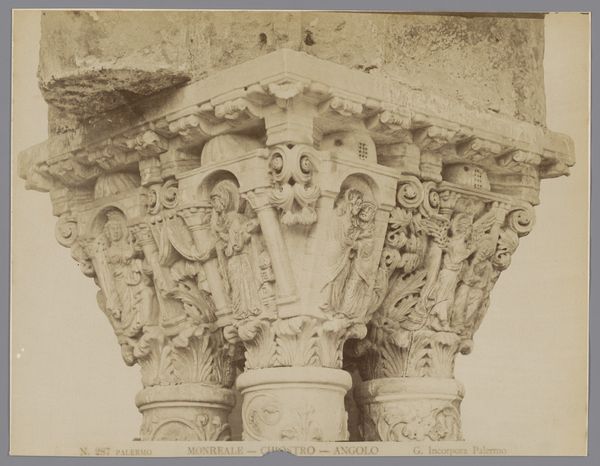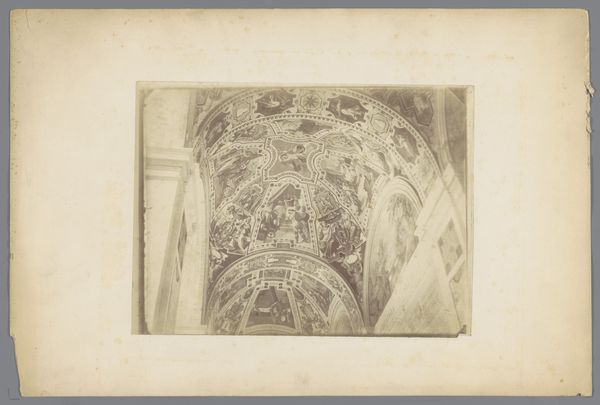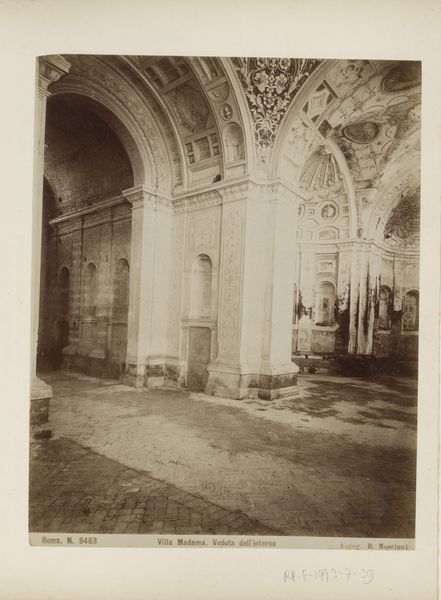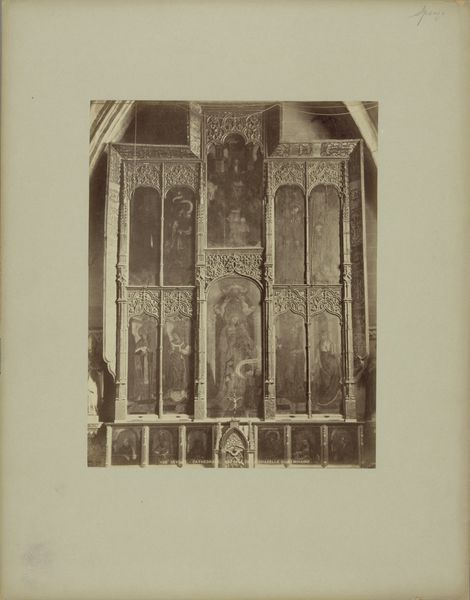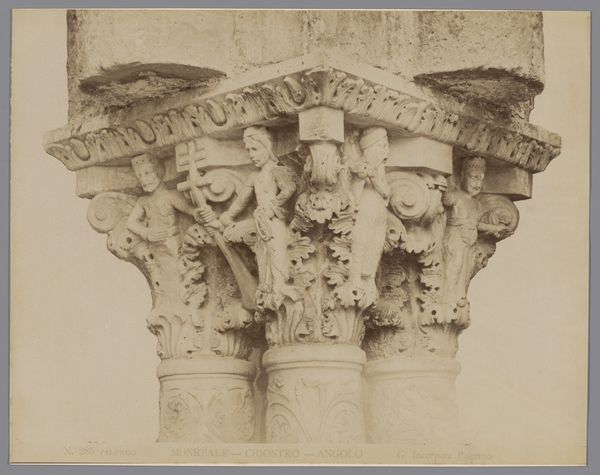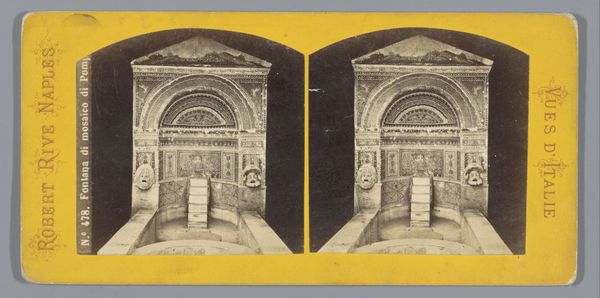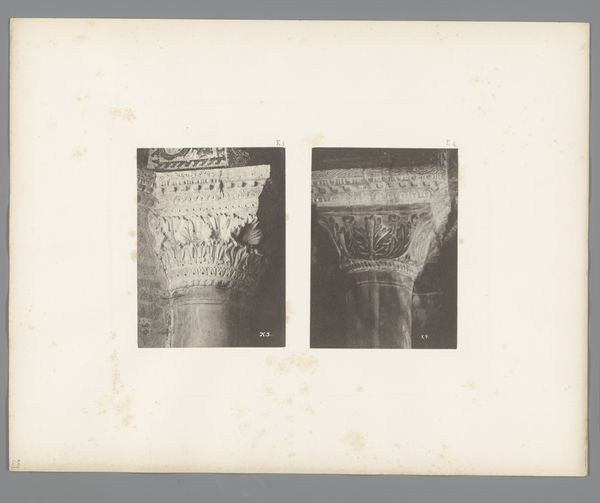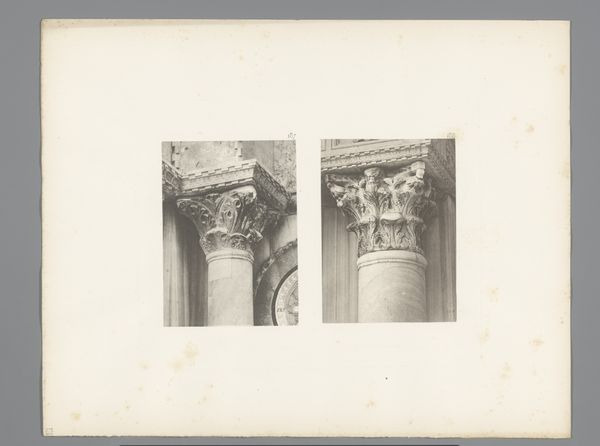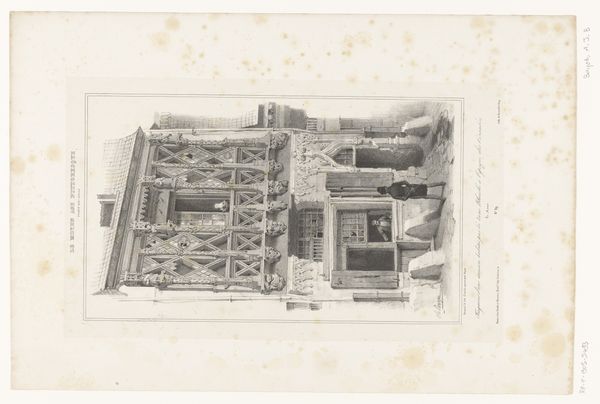
Plafondschilderingen in de Vaticaanse Musea te Vaticaanstad c. 1875 - 1900
0:00
0:00
Dimensions: height 205 mm, width 277 mm
Copyright: Rijks Museum: Open Domain
Editor: This is a photograph entitled "Plafondschilderingen in de Vaticaanse Musea te Vaticaanstad" taken by Gustave Eugène Chauffourier, sometime between 1875 and 1900. It shows, well, exactly what the title suggests - ceiling paintings. What do you see in this image? Curator: What I find fascinating is the photograph's record of the labor involved in crafting and maintaining these incredibly ornate spaces. Consider the physical exertion, the skilled craftsmanship… It's easy to get lost in the iconography, but what about the material reality of the ceiling itself? How was this constructed, and what social hierarchies were at play during its creation and subsequent display? Editor: That's an interesting way to look at it! I was initially drawn to the sort of neoclassical style, with all the figures and ornamentation. It’s something I see in lots of historical painting, but didn’t initially see its value to the materiality. Curator: And I would say, what kind of labor would this subject require of the photographer, too? He had to hold equipment that’s quite large steady and attempt to represent these ornate and elevated painting, using specific dark room practices and material means for circulation, that were only possible because of exploitation of the working class. Editor: That makes so much sense! I hadn't considered the labor of photographic production, in parallel to that of mural making. Curator: The photograph acts as a material object which obscures its social means. Where did he get his chemicals, camera and lens? How do these ceiling decorations encourage or deter labor outside its walls, for the purpose of extraction and exploitation of the colony? I wonder what value these types of objects give or detract in modern society today? Editor: Wow, I’m looking at it so differently now. I appreciate the history embedded not just within the painting, but also the photograph and what it really took to bring both objects to life! Curator: Exactly! By interrogating the materiality, we can unravel complex layers of history and production, giving a fuller picture.
Comments
No comments
Be the first to comment and join the conversation on the ultimate creative platform.
